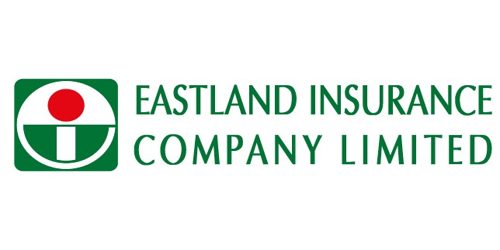Outsourcing:
Outsourcing is defined as an arrangement whereby a firm obtains a good or service externally (Brickley et al. 1996).
Strategic Outsourcing:
Strategic outsourcing is a view in which managers determine which noncore competence to outsource. In case of absent market imperfections and transaction costs, firms would outsource all activities except for their core competencies, defined as skill or knowledge sets (Quinn and Hilmer 1994). The determination of a particular type of noncore competence to outsource is based on:
(1) the potential competitive advantage a firm can gain from insourcing an activity, given outsourcing’s transaction costs, and
(2) a firm’s vulnerability to market failure if the activity is outsourced (Quinn and Hilmer 1994).
Sources of Outsourcing Corporate Tax Functions:
- Accounting [chartered accountants (CA) or cost and management accountants (CMA)] firms
- Law firms having tax lawyers
- Income tax practitioner (ITP)
- Tax consultants
Tax Function Activities:
- Tax Compliance Activities:
(1) As an assessee:
– Collection of TIN (Tax-payer’s Identification Number) Certificate: u/s 184B, 184A
– Advance income tax payment, if applicable u/s 64-73
– Preparation of tax return u/s 75
– Payment of tax as per tax return u/s 74
– Filing of tax return and statements u/s 75
– Maintenance of accounts and documents: u/s 35
– Production of accounts and documents: u/s 79
– Cooperation with income tax authority during inspection (u/s 114), survey (u/s 115), enquiry (u/s 116), and search and seizure (u/s 117)
– Compliance with Notice of Demand (u/s 135) and other notices by tax authority [to file return u/s 77, to file statement of assets and liabilities u/s 80, to attend hearing u/s 83(1), to inform re-assessment u/s 93(1) and others]
– Joint liability in case of partner of partnership firm (u/s 99), member of association of persons (AOP) [u/s 98], director of a private company (u/s 100), liquidator of a private company (u/s 101)
(2) As a tax collector on behalf of tax authority:
– Tax deduction at sources (TDS), if applicable, and deposit thereof to the Treasury u/s 48-63
– Giving documents of TDS with necessary information u/s 58
– Furnishing annual return in case of payment of salary (u/s 108), interest (u/s 109) and dividend (u/s 110)
(3) As an authorized/related person of the assessee: Not applicable for corporate entities
– Appearance on behalf of the assessee at any income tax proceedings: u/s 174
– Legal representative to be treated as deemed to be assessee in case of a deceased person: u/s 92
– Liability in certain cases: u/s 95
- Tax Planning Activities:
According to Lakhotia and Lakhotia (1998, 11-12), the various objectives of corporate tax planning can be grouped under four different heads:
(a) Having maximum taxpayer units;
(b) Taking maximum advantage of the exemptions, deductions, rebates, reliefs, and other tax concessions;
(c) Legally avoiding unwarranted additions to the income;
(d) Avoidance of tax worries and tensions through voluntary tax compliance and tax management.
According to Scholes, Wolfson, Erickson, Maydew and Shevlin (2002, 21), following are the types of tax planning activities:
(a) Attempts to have income converted from one type to another (tax-deductible or not, set-off of loss under any head, domestic vs. foreign source);
(b) Attempts to have income shifted from one pocket to another (taxable vs. tax-exempt source); and
(c) Attempts to have income shifted from one time period to another (delaying recognition of income, if tax rates are constant or declining over time).
Factors Associated with Corporate Decision to Outsource Tax Functions:
According to the findings of a research by Dunbar and Phillips (2001, 43), following are the major factors that influence the firms in outsourcing corporate tax functions:
(1) Transaction costs relating to human-asset specificity: Human-asset-specific transaction costs arising from tax professionals’ interaction with operating managers cause firms to perform tax functions internally.
External tax professionals → Less business knowledge and require relationship with operating managers → Creates transaction costs
(2) Transaction costs relating to proprietary technology: Transaction costs arising from the potential exposure of proprietary technology to external service providers motivates firms to perform tax-planning services internally.
Proprietary technology → Exposing to outsiders → Possible threat of sharing with a firm’s competitor → Creates transaction costs
(3) Economies of scale: Larger firms, utilizing economies of scale, outsource a lower proportion of their tax-planning activities.
Internalizing an activity generates greater transaction costs when a firm cannot produce a volume sufficient to take advantage of scale economies.
(4) Growth vs. nongrowth firms: Growth firms outsource a greater proportion of their tax-planning activities than nongrowth firms.
Growth firms outsource a greater proportion of their tax-planning activities → because outsourcing is a corporate competitiveness strategy, not simply a cost-driven activity.
(5) Status of the firm’s top tax professional: The greater the status of the firm’s top tax professional, the lower the proportion of tax-planning activities.
Reason for above: The marginal return to resource under a manager’s control increases as the manager’s within-firm status increases. Accordingly, it is expected that the greater the top tax professional’s status, the greater the firm resources allocated to his/her control, i.e., the lower the proportion of tax function activities outsourced, because outsourcing may be perceived as minimizing their roles in their respective firms
















